Whether you choose the floating or stick-down option, WICANDERS floors are quicker and easier to install than ever before. With the improved CORKLOC-design and increased sizes of the stick-down range, a WICANDERS floor saves time and reduces installation expense. Learn More
Cork Tile Flooring
Cork Tile Flooring Guide
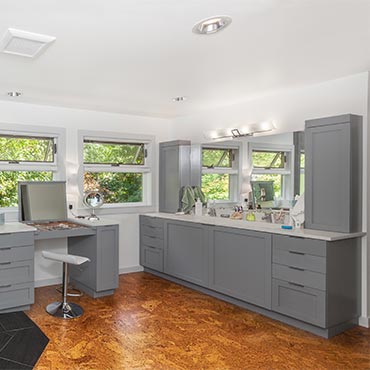
Cork Tile Flooring: The Future-Forward Choice for Modern Design
In the realm of modern architecture and interior design, the choice of flooring material is pivotal, not only for its functional role but also for its contribution to the overall aesthetic and environmental impact of a space. Cork tile flooring emerges as a standout option, offering a blend of aesthetic versatility and sustainability that resonates deeply with architects, designers, and building contractors.
Defining Cork and Tile in the Flooring Universe
- Cork: Harvested from the bark of the cork oak tree, cork is a renewable material known for its unique cellular structure, providing natural insulation, sound absorption, and a cushioned walking surface.
- Tile: In the context of flooring, 'tile' refers to a shaped and fired piece of material, usually square or rectangular, used in covering floors. Cork tiles are made from compressed cork granules and are often used as an eco-friendly alternative to traditional ceramic or stone tiles.
Types of Cork Tile Flooring
The versatility of cork allows for a variety of types, each distinct in grain patterns, color variations, and hardness, catering to different architectural styles and design themes.
- Natural Cork Tiles: Praised for their unique, organic patterns, these tiles bring a warm, earthy feel, ideal for spaces aiming for a natural aesthetic.
- Colored Cork Tiles: Offering a broader spectrum of design possibilities, these tiles are dyed or painted, providing an opportunity for more vibrant, contemporary designs.
- Patterned Cork Tiles: Created using different colors or shades of cork, these tiles are perfect for adding a decorative element to floors.
Cork Tile Flooring vs Cork Plank and Cork Sheet Flooring
While cork tile flooring comprises individual tiles that can be arranged in various patterns, cork plank flooring resembles hardwood planks and is often used for a more traditional wood floor look. Cork sheet flooring, on the other hand, is available in rolls and is suitable for larger, seamless installations.
- Installation: Cork tiles offer creative freedom with patterns but require careful alignment. Planks and sheets are generally easier to install but less versatile in design.
- Durability: All forms are durable, but tiles and planks may be easier to replace if damaged.
- Suitability: Cork tiles excel in areas where unique designs are desired, while planks and sheets are better for achieving a classic, uniform look.
Sustainability of Cork Tile Flooring
In an era where sustainable practices are crucial, cork stands out as an eco-friendly choice. The harvesting process of cork bark is non-destructive, allowing the tree to continue growing, making it a renewable resource. Additionally, cork's natural properties reduce the need for artificial insulation and soundproofing materials.
Technological Advances in Cork Tile Flooring
Recent advancements in cork flooring technology include:
- Improved Finishes: Advanced sealing techniques have enhanced the water resistance and durability of cork tiles.
- Innovative Installation Techniques: The development of interlocking cork tiles simplifies installation, reducing labor time and cost.
Conclusion: The Art of Choosing the Right Cork
Selecting the right type of cork tile flooring is more than just a matter of aesthetics; it's about enhancing the functionality and sustainability of a space. For architects, designers, and contractors, the choice reflects a commitment to creating environments that are not only visually appealing but also environmentally responsible and adaptable to various needs.
Cork tile flooring, with its diverse range of types and the balance it offers between eco-friendliness and practicality, stands as a testament to modern material innovation. Whether it's the organic charm of natural cork tiles in a rustic-themed café or the vibrant hues of colored cork in a contemporary art gallery, the material's versatility is undeniable.
In summary, cork tile flooring offers a unique combination of beauty, functionality, and sustainability, making it a wise choice for modern architectural and interior design projects. Its ability to adapt to different styles and its environmentally friendly nature make it an increasingly popular option among professionals in the field. As we move towards a more sustainable future, materials like cork tile flooring will undoubtedly play a pivotal role in shaping our built environments.
Disclaimer: The information provided in this article is for general informational purposes only. While we strive to ensure the accuracy and reliability of the information presented, we make no warranties, express or implied, about the completeness, accuracy, reliability, suitability, or availability with respect to the content. Any reliance you place on such information is strictly at your own risk. We recommend consulting with professionals for specific advice tailored to your project’s needs, particularly regarding building codes, regulations, and product specifications.
Under no circumstances shall we be liable for any loss or damage, including without limitation, indirect or consequential loss or damage, arising from the use of, or reliance on, the information provided in this article.
Featured Brands
The Best 5 Cork Tile Flooring Brands
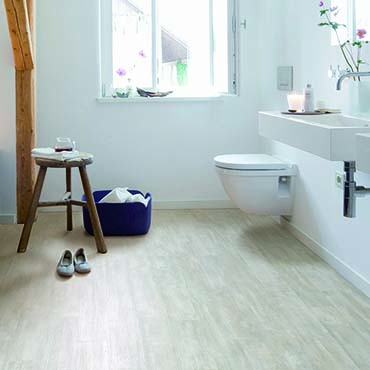
Wicanders® Cork Flooring
Profile | WebsiteWhether you choose the floating or stick-down option, WICANDERS floors are quicker and easier to install than ever before. With the improved CORKLOC-design and increased sizes of the stick-down range, a WICANDERS floor saves time and reduces installation expense. Learn More
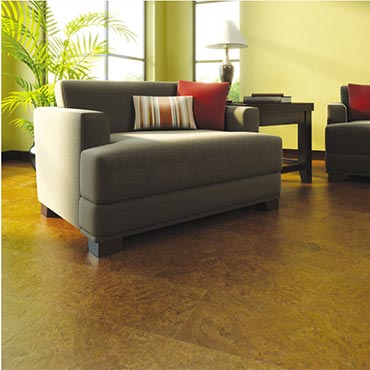
WECork Flooring
Profile | Website | Video | What's New | Warranty | Install | Maintain | GreenRepresenting the fifth generation in the cork industry, WE Cork offers the highest level of experience and quality in natural cork flooring, sound control under hardsurface flooring, crack isolation under tile, expansion joints, bulletin board cork, anti-vibration cork, insulation cork, Decoy block cork, and wall covering. Learn More
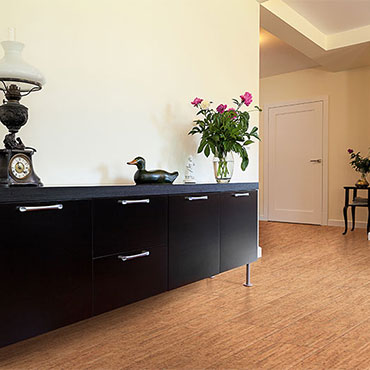
APC Cork Tile Flooring
Profile | Website | Design Tools | Warranty | Install | Maintain | FAQs | GreenWant more from you flooring? How about soft to the touch, insulating properties and eco-friendly? Then Avenue cork tiles are a perfect fit for you. These residential tiles are 12 x 12 inches, 4.8 mm thick and come with a lifetime limited residential wear warranty. Learn More

Expanko Cork Flooring
Profile | Website | GreenCork is the ultimate in commercial and residential floor coverings providing a beautiful, easy to maintain surface rich in clor and texture. Finished with our exclusive polyurethane finish, Expanko Cork tiles will last for decades, as proven by commercial installations still in use after 80 years. Because of our long history and experience in the field, Expanko can offer expert technical support for both materila selection and cork floor restoration. Learn More
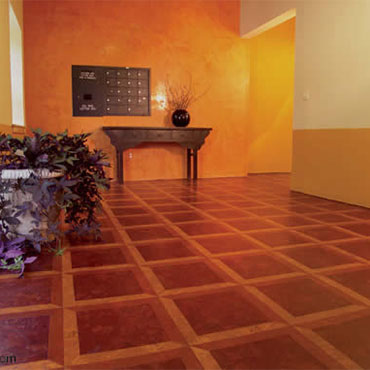
Globus Cork Tile Flooring
Profile | Website | Install | FAQsGlobus Cork tiles are unique for our 25 tile shapes and sizes which include rectangles, squares, hexagons and triangles. We've got more than 40 unique colors and are always developing more. Learn More
Cork Tile Flooring News
Latest Cork Tile Flooring News
Cork Tile Flooring...Cork Tile Flooring: A Blend of Sustainability and Style in Modern Interior Design In the ever-evolving world of interior design, the quest for materials that combine aesthetics, functionality, and sustainability has brought cork tile flooring into the limelight. This natural, renewable material offers a unique blend of comfort, versatility, and eco-friendliness, making it a pre... |




